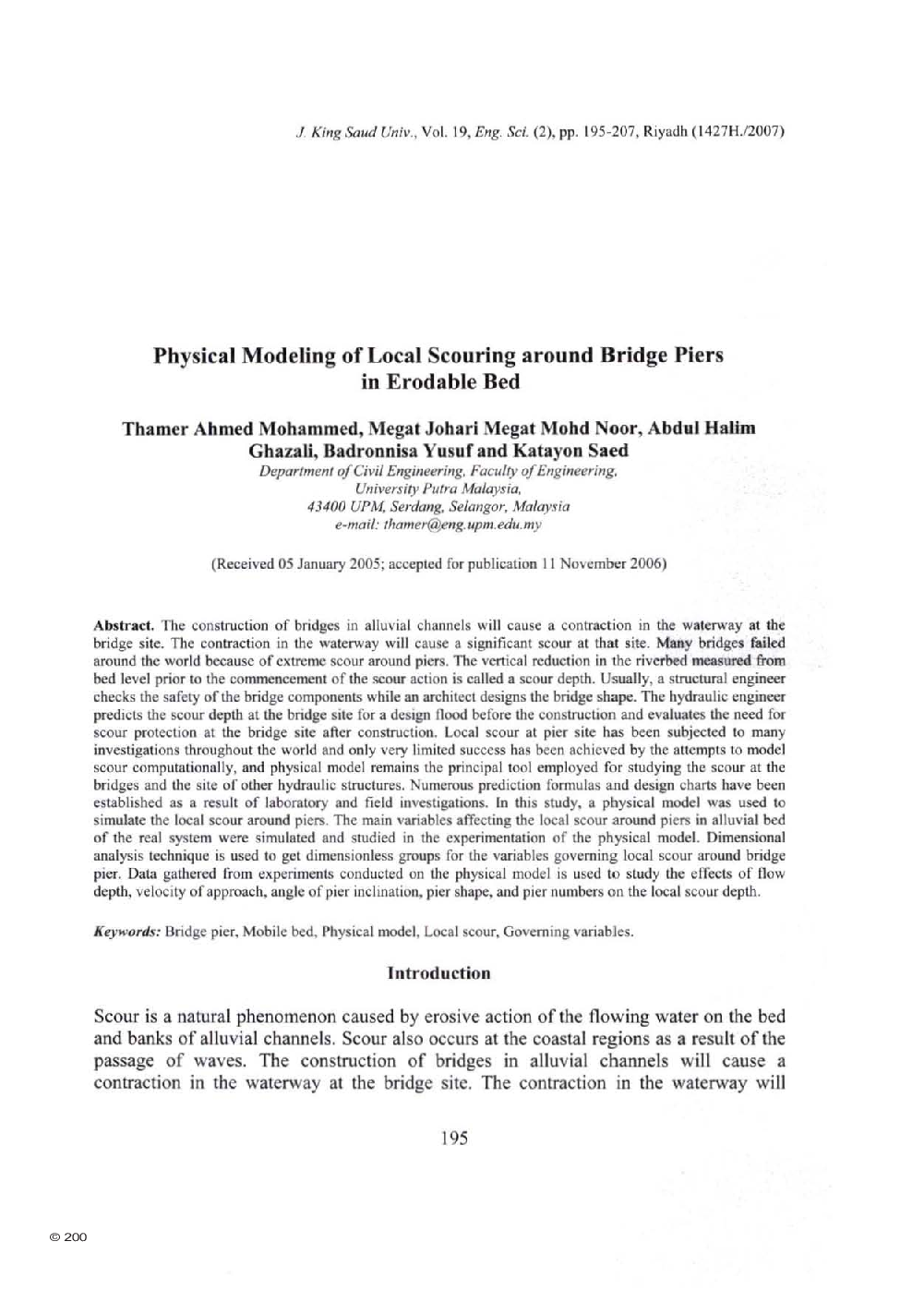| Article ID | Journal | Published Year | Pages | File Type |
|---|---|---|---|---|
| 11016238 | Journal of King Saud University - Engineering Sciences | 2007 | 12 Pages |
Abstract
The construction of bridges in alluvial channels will cause a contraction in the waterway at the bridge site. The contraction in the waterway will cause a significant scour at that site. Many bridges failed around the world because of extreme scour around piers. The vertical reduction in the riverbed measured from bed level prior to the commencement of the scour action is called a scour depth. Usually, a structural engineer checks the safety of the bridge components while an architect designs the bridge shape. The hydraulic engineer predicts the scour depth at the bridge site for a design flood before the construction and evaluates the need for scour protection at the bridge site after construction. Local scour at pier site has been subjected to many investigations throughout the world and only very limited success has been achieved by the attempts to model scour computationally, and physical model remains the principal tool employed for studying the scour at the bridges and the site of other hydraulic structures. Numerous prediction formulas and design charts have been established as a result of laboratory and field investigations. In this study, a physical model was used to simulate the local scour around piers. The main variables affecting the local scour around piers in alluvial bed of the real system were simulated and studied in the experimentation of the physical model. Dimensional analysis technique is used to get dimensionless groups for the variables governing local scour around bridge pier. Data gathered from experiments conducted on the physical model is used to study the effects of flow depth, velocity of approach, angle of pier inclination, pier shape, and pier numbers on the local scour depth.
Related Topics
Physical Sciences and Engineering
Engineering
Engineering (General)
Authors
Thamer Ahmed Mohammed, Megat Johari Megat Mohd Noor, Abdul Halim Ghazali, Badronnisa Yusuf, Katayon Saed,
